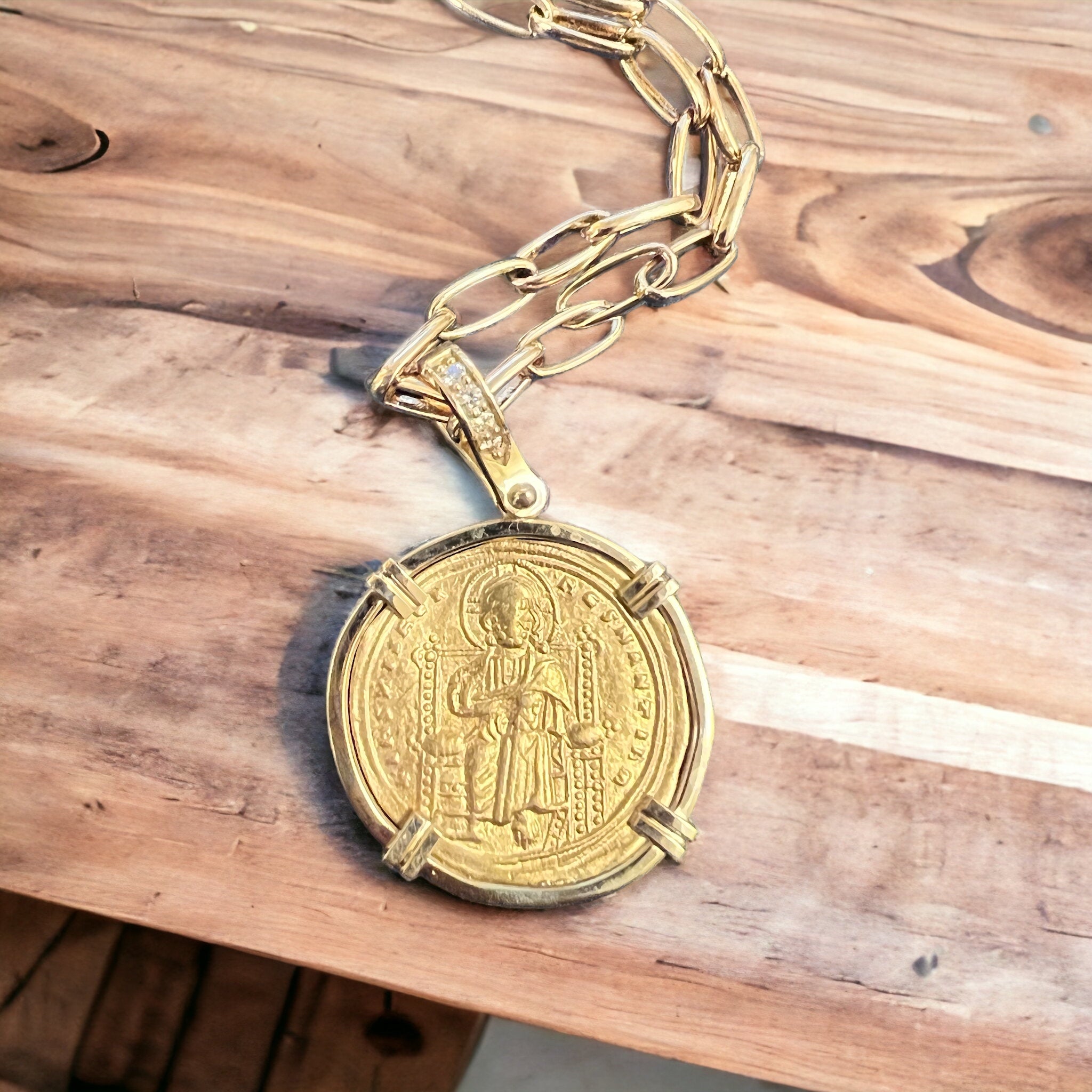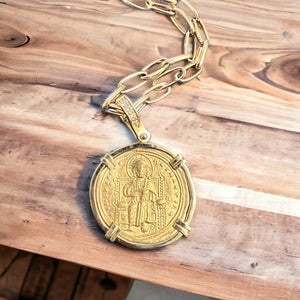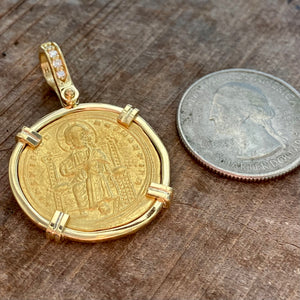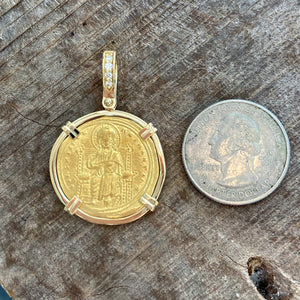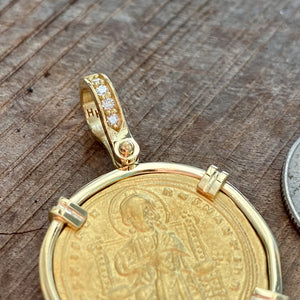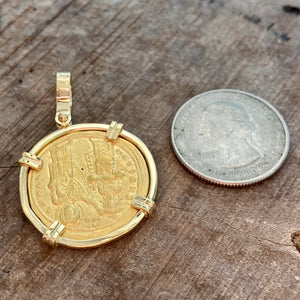Ancient Byzantine Gold Coin - Romanus III - Denomination: AV Histamenon - Circa (1028-1034 AD)
$3,778
Denomination: AV Histamenon (Nomisma)
Date: Circa – AD 1028 – 1034
Mint: Constantinople mint
Weight: 4.43g
Mount: 18K with .10 ct diamonds on the bale
Grade: NGC 6324931-019 - Choice VF - Strike: 5/5 - Surface: 3/5
Description: Romanus III, BYZANTINE EMPIRE Nomisma. Reverse: Mary, on right, crowning Romanus on left who is wearing a saccos and loros and holding cross on globe, with *six* dots on the fold of robe hanging below, MQ between their heads, double border. Obverse: Christ enthroned facing, nimbus cross behind head, holding book of gospels and raising right hand, double border.
History: histámenon, "standard coin” was the name given to the gold Byzantine solidus when the slightly lighter tetarteron was introduced in the 960s. Ever since Emperor Constantine I introduced it in 309, the Byzantine Empire's main coinage had been the high-quality solidus or nomisma, which had remained standard in weight (4.55 grams) and gold content (24 carats) through the centuries. Emperor Nikephoros II Phokas (r. 963–969), however, introduced a new coin, the [nomisma] tetarteron ("quarter coin") which was 2 carats lighter than the original nomisma. The latter now became known as the histamenon, from the Greek verb ἵστημι, "to stand up", implying that these followed the traditional standard. The reasons for this change are not clear; Byzantine chroniclers, however, suggest fiscal motives, reporting that Nikephoros collected the taxes as before in the histamenon. while paying back with the tetarteron, which was officially rated as equal in value to the full-weight coin.
63244

